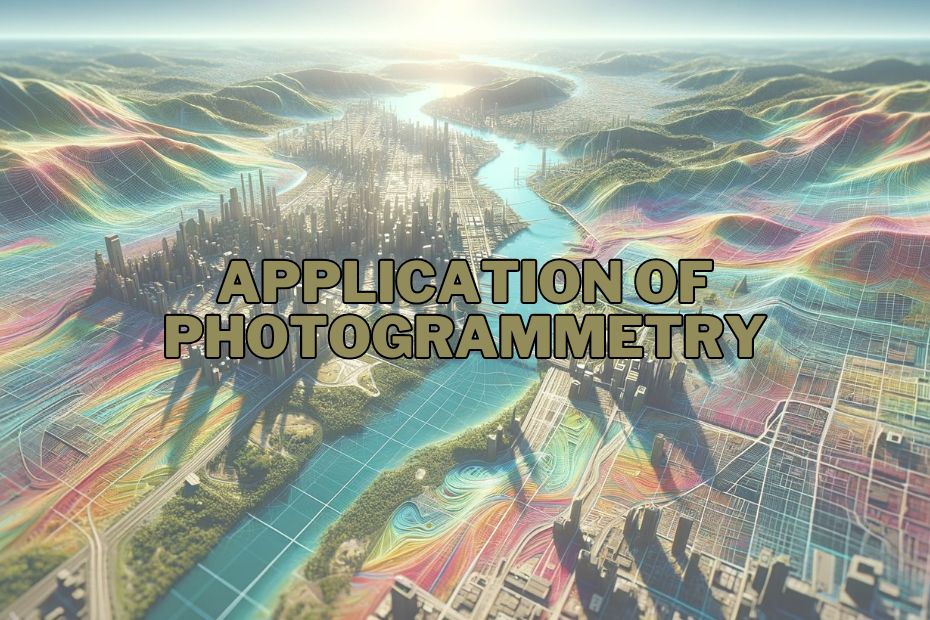Photogrammetry, a method of using photography in surveying and mapping to measure distances between objects, has found diverse applications across multiple fields. In this article, we will delve into some fascinating application of photogrammetry, shedding light on its significance and impact.
The application of photogrammetry spans various industries, offering precise, efficient mapping and 3D modeling capabilities. It’s essential in architectural reconstruction, surveying, agriculture, environmental monitoring, and forensic investigation. This technology enhances heritage preservation, mining, entertainment, medical imaging, urban planning, and geological exploration, revolutionizing each field with detailed spatial analysis and imagery.
Application of Photogrammetry: Transforming Various Industries
Photogrammetry is the science of making measurements from photographs. It involves the use of specialized software and equipment to derive precise and valuable data from images.
1. Architectural Reconstruction
Photogrammetry has become a game-changer in architectural reconstruction. It enables architects and historians to create detailed 3D models of buildings, even those that are damaged or partially destroyed. This technology not only aids in restoration projects but also helps in preserving historical data for future generations. By capturing detailed images from various angles, photogrammetry allows for accurate measurements and reconstruction of intricate architectural details, facilitating more informed decisions in restoration work.
2. Surveying and Mapping
The role of photogrammetry in surveying and mapping cannot be overstated. It simplifies the process of creating accurate land maps and topographical data, essential for urban planning, construction, and environmental management. This technology enables the capture of high-resolution images from aerial or satellite sources, making it easier to map large areas with precision and less physical effort. Photogrammetry also plays a crucial role in updating geographical information systems (GIS), providing essential data for various planning and developmental projects.
3. Agriculture and Precision Farming
In agriculture, photogrammetry is revolutionizing precision farming. Farmers use aerial images captured through photogrammetry to analyze soil health, monitor crop growth, and manage resources more efficiently. This technology enables the detection of pest infestations, disease outbreaks, and nutrient deficiencies, allowing farmers to take timely action. By optimizing resource allocation and improving crop management, photogrammetry significantly enhances agricultural productivity and sustainability.
4. Environmental Monitoring
Environmental monitoring has been greatly enhanced by photogrammetry. It offers an effective way to track changes in ecosystems, monitor wildlife populations, and assess the impact of climate change. Photogrammetry provides detailed images that help in analyzing land use changes, deforestation rates, and the health of aquatic ecosystems. This technology is crucial in developing strategies for conservation and sustainable environmental management.
5. Forensic Investigation
Photogrammetry has found a unique application in forensic investigation. It aids in accurately reconstructing crime scenes, which is vital for criminal investigations. By creating detailed 3D models of crime scenes, investigators can analyze evidence and witness statements more effectively. This technology also helps in presenting visual evidence in courts, making it easier for juries to understand complex scenarios.
6. Heritage Preservation
Heritage preservation is another area where photogrammetry is making a significant impact. It helps in documenting and preserving cultural heritage sites, artifacts, and artworks. Photogrammetry enables the creation of precise 3D models of historical sites and objects, which can be used for restoration, study, and digital archiving. This technology is invaluable in protecting the world’s cultural heritage for future generations.
7. Mining and Quarrying
In mining and quarrying, photogrammetry enhances safety and efficiency. It provides accurate geological data and topographical maps, essential for planning and executing mining operations. This technology aids in assessing mineral deposits, monitoring quarry sites, and ensuring compliance with environmental regulations. Photogrammetry’s precise data helps in minimizing risks and optimizing resource extraction.
8. Entertainment and Gaming
The entertainment and gaming industries are harnessing photogrammetry to create more realistic and immersive experiences. It allows for the creation of detailed 3D models of characters, environments, and objects, enhancing the visual quality of games and movies. Photogrammetry also aids in virtual reality (VR) and augmented reality (AR) applications, providing a more lifelike and engaging user experience.
9. Medical Imaging
In medical imaging, photogrammetry is advancing diagnostic and treatment methods. It is used to create precise 3D models of body parts, aiding in surgical planning and custom medical device manufacturing. This technology also plays a role in patient education, helping them understand their conditions and treatment options better.
10. Urban Planning
Urban planning benefits greatly from photogrammetry. It provides planners with detailed spatial data, essential for designing urban spaces, infrastructure development, and land use planning. Photogrammetry aids in visualizing future projects, assessing environmental impacts, and engaging with the public through more informative visual presentations.
11. Geological Exploration
Finally, in geological exploration, photogrammetry facilitates the study of geological formations and mineral resources. It provides detailed images and data, crucial for identifying geological hazards, planning exploration activities, and environmental impact assessments. This technology enhances the efficiency and accuracy of geological surveys, contributing to sustainable resource management.
Conclusion
Photogrammetry’s versatility and precision make it an invaluable tool across numerous fields. From architectural reconstruction to geological exploration, it provides innovative solutions, enhances efficiency, and contributes to sustainable practices. As technology advances, we can expect photogrammetry to play an even more significant role in shaping our world.
FAQs: Application of Photogrammetry
Is photogrammetry useful in forensic investigations?
Absolutely, it assists in accurately reconstructing crime scenes, aiding in evidence analysis and presenting visual evidence in court.
What role does photogrammetry play in medical imaging?
It creates precise 3D models for surgical planning, custom medical device manufacturing, and patient education in medical treatments.
What equipment is needed for photogrammetry?
Photogrammetry requires a camera, software, and often a drone for aerial photography.
Are there any limitations to photogrammetry?
It may struggle in low-light conditions or with highly reflective surfaces.
Can photogrammetry be used in medical fields?
Yes, it’s used in surgical planning, orthodontics, and prosthetics, improving accuracy and patient outcomes.
